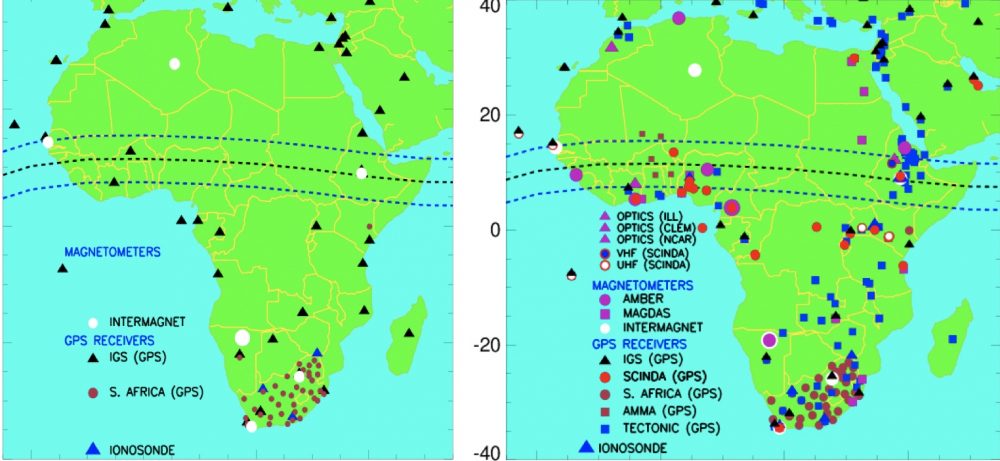Much of what is known about equatorial ionospheric physics is based on Jicamarca radar observations. However, satellite observations consistently show significant longitudinal differences in the global distribution of equatorial ionospheric irregularities and its driving electrodynamics. The equatorial ionosphere in the African region often behave differently than other parts of the Earth. In the African region, satellite observations have shown ionospheric bubbles that are uniquely much deeper (in terms of bubble depth) and very active all year round unlike other longitudinal sectors. However, due to the uneven distribution of ground-based instruments around the world that devoid the African sector, the temporal and spatial evolution of these irregularities remain a mystery to the scientific community. This affects the state-of-the-art of global ionospheric electron density modeling efforts that are essential to improve our communication and navigation systems. It was then quickly realized that coordinated ground- and space-based observations of ionospheric irregularities are needed to unravel African sector equatorial ionospheric dynamics. Hence, during the past one decade very few small instruments, including Global Navigation Satellite Systems (GNSS), magnetometers, ionosondes, very high frequency (VHF) radar, Fabry–Pérotinterferometer (FPI), all sky imager, Compound Astronomical Low-cost Low-frequency Instrument for Spectroscopy and Transportable Observatory (CALLISTO), and others have been deployed in the region. These instruments are deployed with one main objective – to understand the physical processes that control the uniquely active all year-round electron density irregularities and its drivers in the region.
The main goal of this project is to better understand the physical processes that control the unique ionospheric dynamics and structures often observed in the African region compared to other longitudes by utilizing data from recently deployed multi-instruments in the region. To accomplish the goal successfully a team of international experts from different countries (from Africa, Asia, Europe, and USA) has been established. The team members are diverse and multidisciplinary, including neutral wind expert, irregularity experts, equatorial electrojet expert, ionosphere modeling and GNSS TEC expert, and Solar physics expert.
Our project is mainly focused to address three longstanding fundamental problems often observed in the region. These include:
(1) Why ionospheric irregularities in general are unique in the African sector?
(2) What are the possible driving mechanisms that create unique equatorial structures in Africa?
(3) Why do existing models fail to predict such unique structures in the African sector?
In order to address these problems, the long-term (about ten years) multi-instrument observations that are archived by individual PIs will be utilized. Since different instruments observe different parameters, coordinating results obtained from different instruments allow us to understand the physical process that control unique ionospheric dynamics and structure in the African sector. Considering the range of instruments and volume of scientific results from long-term observations, performed by individual PIs, require extended discussion time to coordinate and understand all the results, during our two one-week face-to-face team meetings at ISSI in Bern, Switzerland. The step-by-step progress report of the team’s effort will be presented at different international conferences, and the final review paper will be published at peer reviewed journal.
